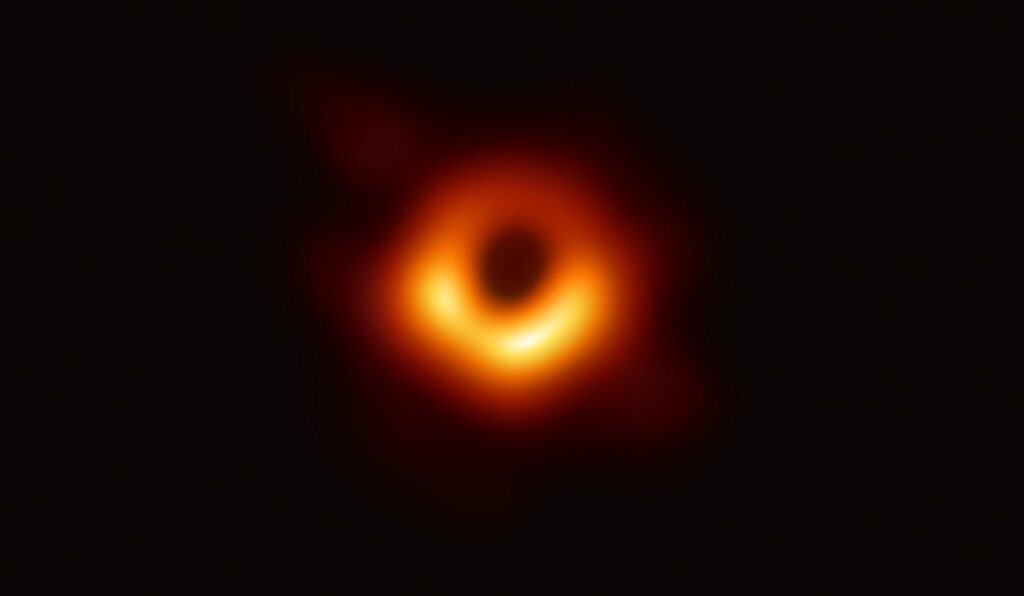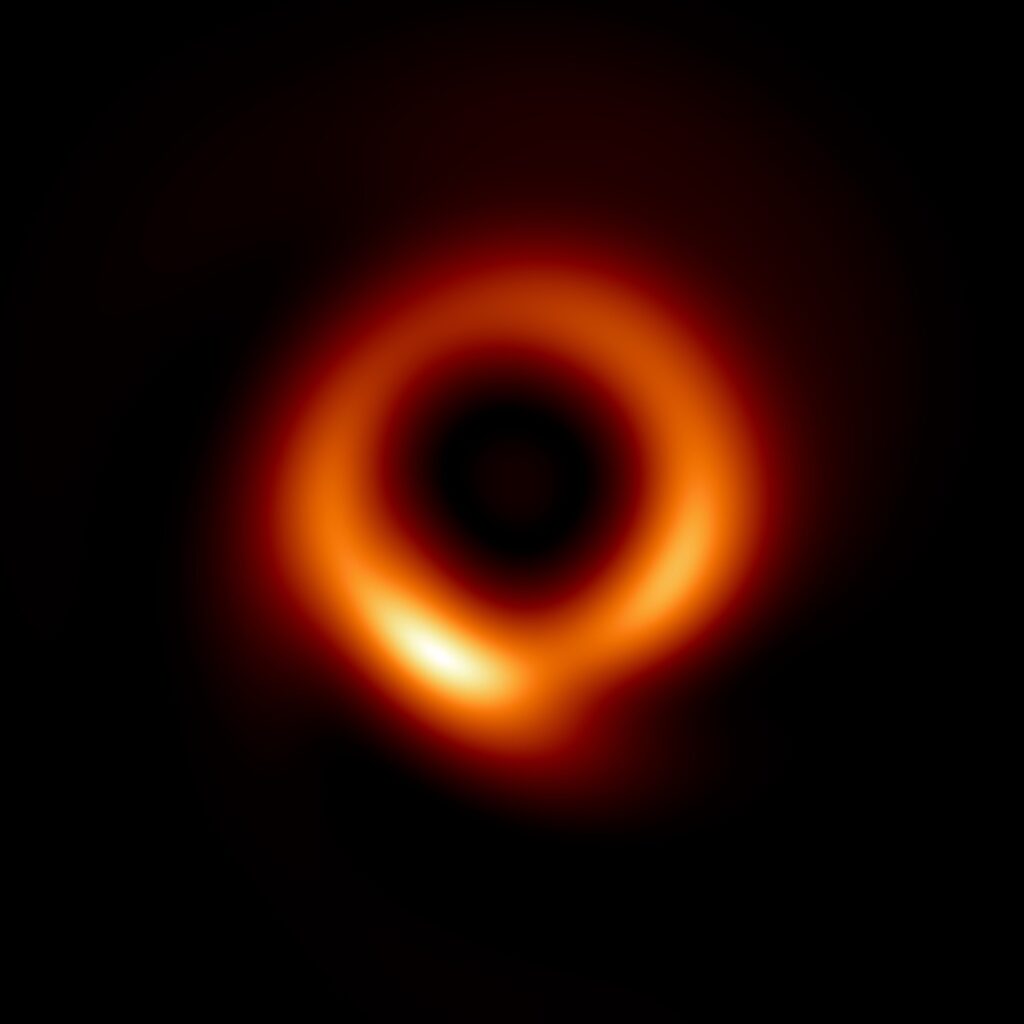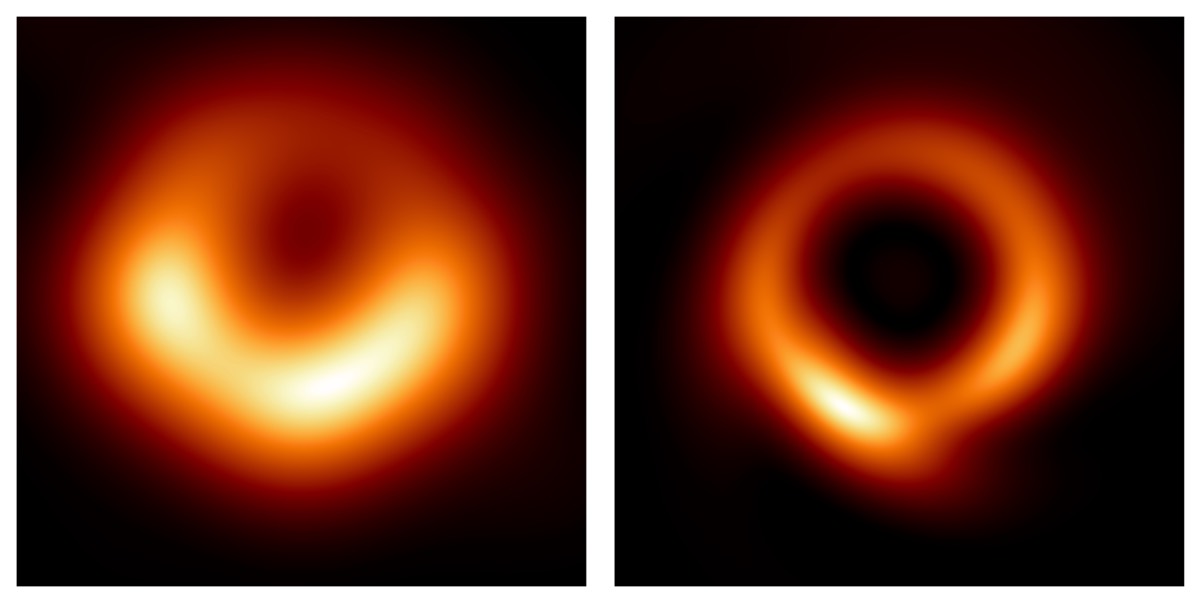Thanks to the use of a new machine learning algorithm, astronomers have managed to improve the famous image of the black hole located in the center of the galaxy M87. The updated image shows previously unknown details of the accretion disk surrounding it.
First ever image of a black hole
The galaxy M87 gained worldwide fame in 2019, when the participants of the Event Horizon Telescope (EHT) project published the first ever image of the silhouette of a supermassive black hole located in its center. It was obtained with the help of a collaboration of eight radio telescopes located in different parts of our planet. By combining them into one network, astronomers managed to obtain an analog of the antenna array comparable to the diameter of the Earth.

In the historical EHT image, a bright ring-shaped structure with a dark central area could be seen. The first corresponds to an accretion disk, and the second corresponds to the silhouette (shadow) of a black hole — an area that even light cannot leave.
But despite the huge success of astronomers, there were gaps in the M87 image, a kind of missing puzzle piece. This is due to the fact that although the authors of the EHT project have managed to create a virtual analogue of a radio telescope the size of the Earth, the antennas used in the observations do not actually cover our entire planet. Hence the inevitable loss of data.
Artificial intelligence at the service of astronomers
In order to solve this problem, researchers from the Princeton Institute for Advanced Study used the help of artificial intelligence. They developed a machine learning algorithm called PRIMO (principal-component interferometric modeling) and “trained” it on 30 thousand simulated images of accretion disks of black holes.

After that, the scientists gave the algorithm to analyze the EHT data. As a result, PRIMO created a new, much clearer image of the silhouette of a black hole. It shows significantly more details of the accretion disk surrounding it (the researchers figuratively compared it to a skinny donut). According to the authors, the image is consistent with both EHT data and theoretical predictions, primarily bright rings resulting from the fall of hot gas into a black hole.

The new image of M87 will allow astronomers to more accurately determine the mass of the black hole. It will also make it possible to tighten restrictions on alternative models of its event horizon and provide more reliable verification of the theory of gravity. In the future, PRIMO may be used to process other images, including the image of the Sagittarius A* black hole located in the center of the Milky Way.
According to https://phys.org
Follow us on Twitter to get the most interesting space news in time
https://twitter.com/ust_magazine

